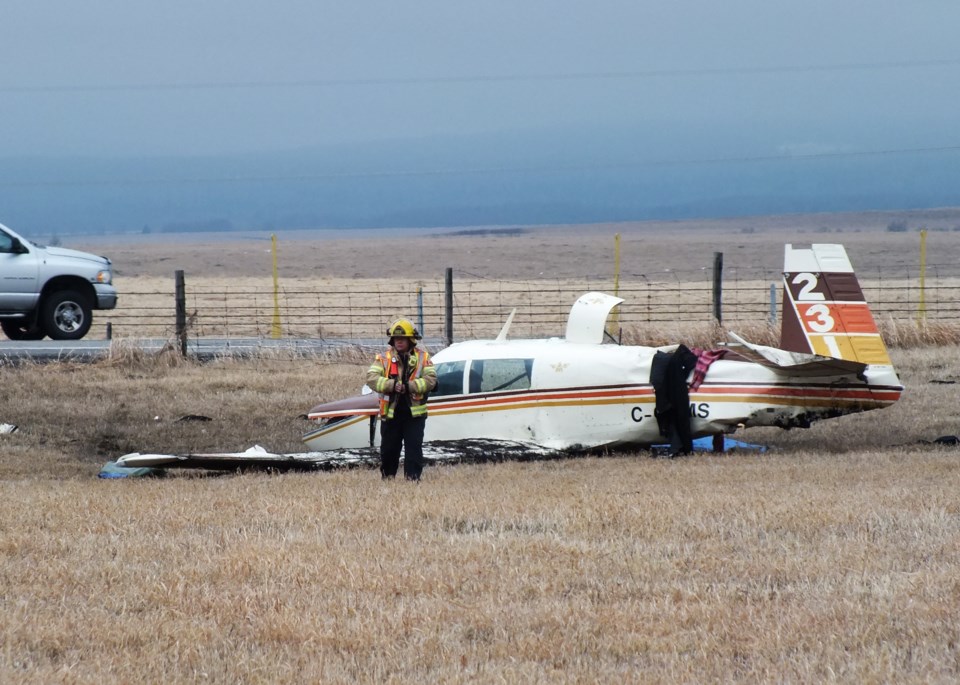The plane crash near Springbank Airport last April that resulted in the death of a Calgary man and life-threatening injuries to a woman passenger was possibly influenced by inflight icing, according to a report released Oct. 17 by the Transportation Safety Board of Canada.
The report states that the aircraft had recently been purchased, and the purpose of the flight was for the right-seat pilot to become familiar with operating the Mooney 231 and learn from the pilot-in-command, who was occupying the left seat and had experience on the aircraft type.
The aircraft was later to be relocated to its new owner in Fort St. John, B.C., where the right-seat pilot was to provide type-specific instruction to the new owner.
The report goes on to state that after takeoff, the aircraft turned left, climbing to a cruising altitude of 9,000 feet above sea level (ASL). It flew over High River Aerodrome, and northwest of Okotoks, at an altitude of approximately 8,000 feet ASL, after which it turned to return for an instrument approach and landing in Springbank.
The pilot-in-command contacted air traffic services and requested a lower altitude because the aircraft was “picking up a little ice.”
The aircraft continued to descend, and at 3:18 p.m., it struck the bank of a ditch on the north side of the Trans-Canada Highway, 0.6 nautical miles south of the threshold of the Springbank runway, and slid to a halt in a pasture.
The report concludes the account of the crash with the following statement:
“The aircraft hit the ground in right-wing-low, nose-down attitude, went through a barbed wire fence, and came to rest 68 feet north of the ditch, facing a southerly direction.”
In the Wreckage Information section, the reports states that “photos revealed a build-up of mixed ice on the aft VHF (very high frequency) communication antenna, the leading edges of the horizontal stabilizer, and the leading edge of the left wing.”
The investigation estimated that “the build-up of the mixed ice on the VHF communication antenna to be between three-quarters of an inch and one-inch thick, and that mixed ice had fallen off the right horizontal stabilizer.”
At the time of the accident, there was light rain, and the temperature was 0.8 degrees Celsius. The investigation was unable to determine with certainty what weather information the pilots consulted before the flight; however, the report did state the pilots had not contacted a NAV CANADA flight information centre for a weather briefing before departure.
The report goes on to describe the dangers of icing in a plane like the Mooney M20K:
“The ice causes an increase in drag, which the pilot detects as a loss in airspeed or an increase in the power required to maintain the same airspeed,” it reads. (The drag increase is also due to ice on other parts of the aircraft).
“The longer the encounter, the greater the drag increase; even with increased power, it may not be possible to maintain airspeed. If the aircraft has relatively limited power (as is the case with many aircraft with no ice protection), it may soon approach stall speed and a dangerous situation.”
Michael James Wilton, 45, of Calgary was the pilot killed in the incident. Megan Gallagher, 22, a pilot and flight instructor from Fort St. John, B.C. was the passenger.
Postmedia has since reported that she has recovered from her injuries.



